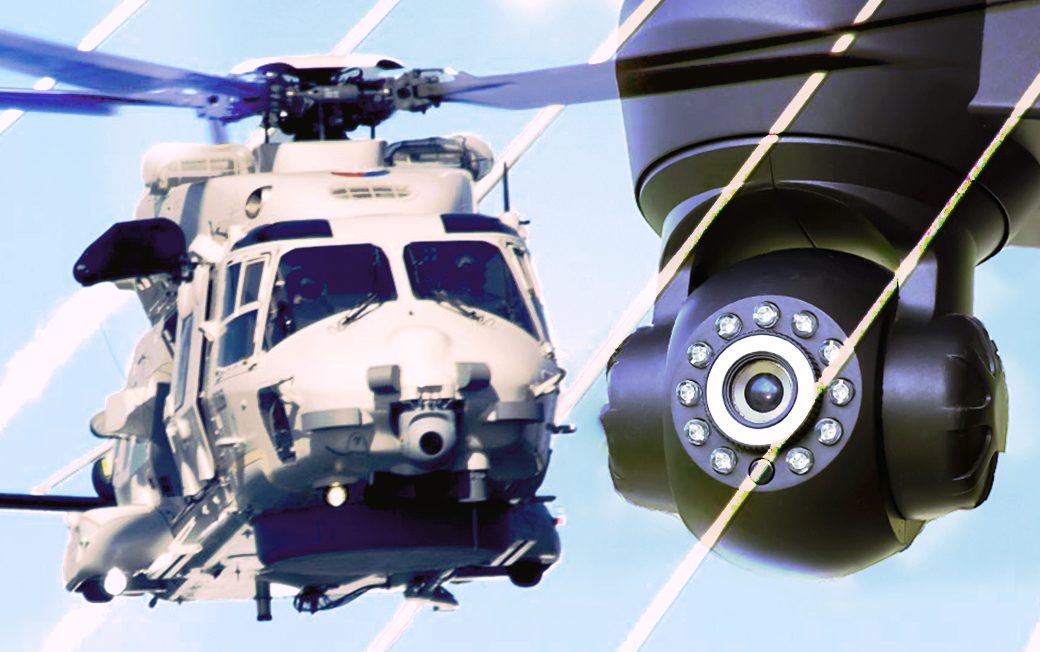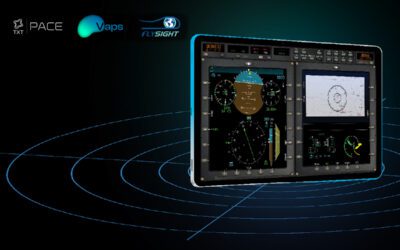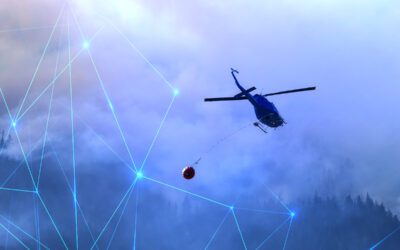The term ‘surveillance’ has a lot of connotations for the general public. Today, we have digital ‘eyes and ears’ to gather information, and modern surveillance technology is part of everyday life.
From biometric systems to allow access to computers, laptops or phones to high-level security surveillance enhanced with Augmented Reality and AI, almost every part of our lives is digitally monitored in some way, even if we’re just walking down the high street.
So, we have a self-perpetuating situation where more surveillance becomes necessary to protect the public and society’s infrastructure. But where is all this going? And as the dawn breaks on a world where AI is becoming increasingly prevalent, what direction will advanced surveillance take over the next few years?
In this article, we’ll briefly look at the statistics of surveillance before examining the various types of technology used. We’ll also look at new developments, such as Augmented Reality, and address the big question regarding AI.
How commercially important is advanced surveillance?
The simple answer is very important. Data published by Statistica Research Department in December 2023 estimated that global surveillance technology in 2022 was valued at over US$130 billion and is expected to exceed US$148 billion in 2023. By 2027, the statistics show a massive growth in the financial viability of global surveillance, potentially topping around US$235 billion.
Those numbers are massive and demonstrate quite clearly that surveillance is a hugely profitable business. But why is it worth so much? Well, when you consider that analysis by SRD into the scale of significant data breaches worldwide shows levels that impact almost everyone on the planet several times over, it is understandable why advanced surveillance is so necessary.
But what about ‘real world’ surveillance as opposed to digital surveillance? As more conflicts escalate and criminal issues such as drug and people trafficking escalate, airborne surveillance combined with satellite imaging becomes ever more critical to military and law enforcement operators. Drones have become the latest weapon in this aerial battle, and thanks to considerable advances in multi-spectral imaging, real-time data analysis and a host of other elements, positive results are being reported in deployments around the world.
Different types of surveillance
As we move into 2024, several streams of advanced surveillance are coming online. While systems such as live video monitoring and managed video surveillance still have a significant role to play, they are being augmented by a raft of new technologies. Let’s look at each of these and how they factor into next-generation surveillance techniques.
Live video monitoring and managed video surveillance
At its most basic level, managed video surveillance is the bedrock of most surveillance systems. While it can’t justifiably be classified as an ‘advanced’ system, it is intrinsically linked to more up-to-date techniques. The skills acquired by operators using these systems are transferrable, and the level of detail captured by modern multi-spectral cameras far outweighs the grainy, poorly defined pictures of old.
Live video monitoring, however, requires a whole other level of skill, and in recent years, we’ve seen live video monitoring being augmented by AI and complex algorithms. Because advanced surveillance systems capture so much information, the trick is to ‘filter out’ the background noise and focus on the relevant information.
But rather than relying purely on AI, human interaction is also a factor, allowing experts to have the final say on interpreting the data captured. That human element is vital in a law enforcement or military field of operation.
The IoT – utilising a whole new network for surveillance
The Internet of Things brings with it a new opportunity to utilise different platforms for surveillance. In 2024, experts predict that the groundwork laid down over the last couple of years will allow the IoT to play a more significant role in advanced surveillance technology. Integrating video surveillance with different IoT devices will enable comprehensive and specialist systems to be set up, including anything from temperature and movement sensors to access control systems.
Predictive Analytics and big data collation
While predictive analytics has been used in business modelling for some time, using machine learning to identify risks and statistically interpret data can be grandfathered over to the security industry. Thanks to cloud-based storage systems, massive amounts of big data can be collected and stored, providing instant access to that data for analysts anywhere in the world.
This works particularly well with aerial surveillance and satellite imaging, where the data can be immediately sent to a ground-based centre for interpretation. By incorporating predictive analytics into the equation, that data can be sifted and analysed efficiently while maintaining the human element.
Enhanced authentication
As anyone with a Social Media account or who browses YouTube will know, there are a lot of fake videos out there. AI may have a positive role to play in advanced surveillance technology (more on that shortly), but it can also be used to manipulate video footage, calling into question the authenticity and accuracy of the content.
Advanced validation is in greater demand as we move forward, especially if the video being presented is to be used in a law enforcement situation or as part of military intelligence gathering. Authentication isn’t just a matter of ‘ticking all the squares with a picture of a traffic light in them’ anymore. Advanced surveillance will require frame-by-frame authentication to ensure that a video capture is genuine. Expect this to be an area of considerable development in the coming months and years.
The use of 5G in surveillance technology
With many countries switching off their 3G networks and relying purely on 4 and 5G instead, the greater coverage that these stronger signals provide allows advanced surveillance technology to operate more effectively. 5G makes wireless video surveillance more accessible for use in remote locations and allows more devices to connect to a single network. 5G will allow advanced surveillance technology to penetrate new and more diverse markets, as well as drive forward the development of new equipment.
The big question: is AI really a good surveillance tool?
AI has had a bit of a shaky year in 2023. Its integration into the Internet and the Metaverse, particularly, has met with considerable resistance. Many users think it isn’t ready to work as an effective tool, particularly when rendering images and content. However, as already mentioned, AI most certainly has a place in the surveillance industry. Its ability to analyse data and filter out extraneous and irrelevant information is not in question.
But AI still has a long way to go before it can be used as an autonomous system without human intervention. Regulation and legislation are still needed to ensure that AI-based surveillance tech doesn’t contravene myriad human rights legislation and anti-privacy laws, for example.
On the positive side, though, is the fact that AI has unlimited possibilities and can be integrated into technology as a System-on-Chip, which will allow it to optimise a wide range of video surveillance systems. It can potentially improve everything from analytics to image quality in all of the bandwidths and can be interlinked into multi-layered systems both on the ground and in the air.
Augmented Reality – tried and tested technology
While AI is still taking somewhat tentative steps into advanced surveillance, one system has already been tried and tested in the field – Augmented Reality. Layers of AR can be added to a surveillance system that overlays essential information on top of topographical mapping and multi-spectral software. This is of particular use for airborne surveillance units and can help them easily navigate an unfamiliar landscape.
AR can also help to identify and track individual targets with exceptional accuracy, making the validity of AR’s real-world applications in surveillance situations unquestioned.
The next level of biometric surveillance
We briefly mentioned biometrics earlier, but experts believe that 2024 will see a considerable level of advancement in this particular field. Facial recognition has already been through the mill. It has been challenged in the UK and the USA for its accuracy (which is particularly poor when it comes to identifying and distinguishing POC subjects).
So, while facial recognition undergoes a bit of a rethink, biometrics has advanced in other areas that can help surveillance operators identify and isolate individuals during an operation. One of the most significant developments has been in behavioural biometrics, where individuals can be identified by their behaviour or movement patterns.
So far, the most successful has been ‘gait recognition’, which identifies an individual by how they walk. Currently being trialled by the Chinese police, the system relies on video surveillance footage and an algorithm to analyse how a person moves as they walk. If facial recognition becomes subject to prohibitive legislation, gait recognition may be the next major biometric surveillance system to emerge.
FlySight – leading the way in surveillance tech
The different aspects of advanced surveillance applications are exciting for airborne surveillance systems. With the increased use of miniaturisation and drones in aerial surveillance operations, capabilities such as gait recognition and other biometric applications, AI, and predictive analytics can be easily integrated into existing systems. As these are intuitive and utilise equipment already familiar to the operator, advanced surveillance systems can come onstream almost immediately.
At FlySight, we constantly innovate and develop geospatial software solutions for mission-critical operations for a wide range of clients. Our OPENSIGHT system offers development tools, turnkey solutions and plugins useful in the latest advanced surveillance systems. Using everything from Augmented Reality systems to multi-platform PED systems, we can provide our clients with surveillance systems that integrate geo-exploitation toolboxes and mission data analysis software.
We feel that 2024 will be an exciting year for the development of advanced surveillance technologies and that, thanks to advances such as 5G integration and wireless surveillance systems, more and more organisations will see the benefits of including advanced surveillance tech in their operations.
To learn more about OPENSIGHT, contact us in confidence today or browse our Resources section.





